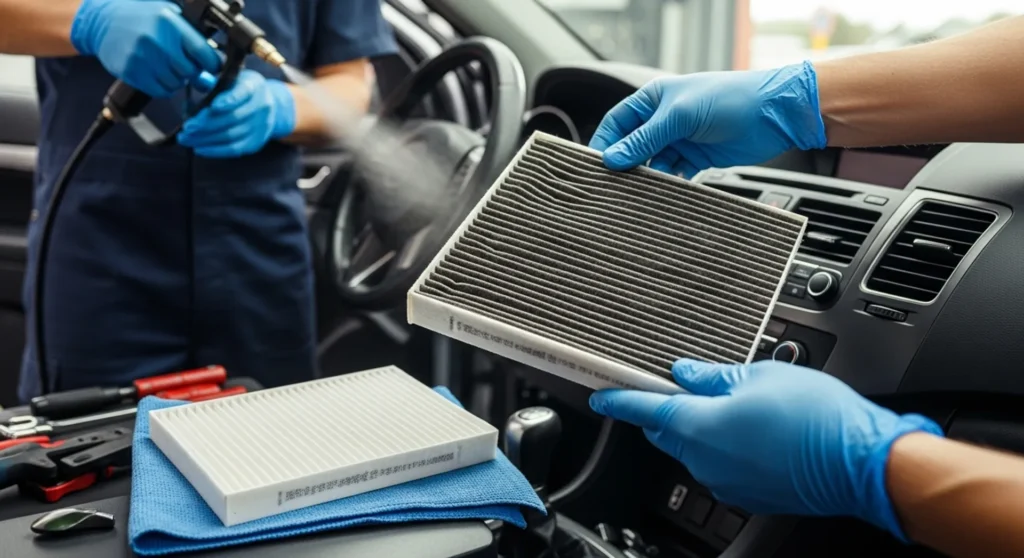When most car owners think about maintenance, they focus on oil changes, brakes, or tire rotations. But one component often overlooked is the cabin air filter — and by extension, the cleanliness of your vehicle’s HVAC (Heating, Ventilation, and Air Conditioning) system. Both directly affect the air you and your passengers breathe every time you drive. Neglecting them not only impacts comfort but can also compromise health and safety.
What Is a Cabin Air Filter?
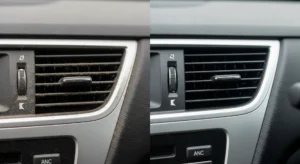
A cabin air filter is a key part of your vehicle’s HVAC system. Unlike the engine air filter, which protects your engine, the cabin filter is designed to clean the air entering the interior through your ventilation system. It removes dust, pollen, soot, and even harmful pollutants. Some high-quality filters include activated carbon layers to absorb odors and reduce exposure to gases.
Most modern vehicles are equipped with cabin air filters, yet many owners are unaware they even exist. Over time, filters clog with debris, limiting airflow and reducing efficiency. This is why timely replacement is essential.
Why Cabin Air Filters Matter
- Air Quality: Clean filters keep pollutants, allergens, and dust out of your cabin.
- Health Benefits: Reduces respiratory issues, allergies, and exposure to harmful fine particles.
- System Efficiency: A clogged filter makes your HVAC system work harder, reducing cooling and heating efficiency.
- Odor Control: Prevents musty smells caused by mold or bacteria buildup.
How Often Should You Replace a Cabin Air Filter?
Most manufacturers recommend replacement every 12,000 to 15,000 miles or once a year. However, if you live in an urban area with high pollution, drive in dusty conditions, or suffer from allergies, you may need to replace it more frequently. During routine maintenance, always ask your technician to inspect your filter. If it’s dark, clogged, or has visible debris, it’s time for a replacement.
What Is HVAC System Sanitization?
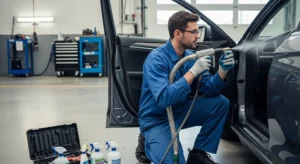
Replacing a cabin air filter is only half the story. Your HVAC system can accumulate mold, bacteria, and contaminants inside ducts and evaporators. HVAC sanitization is a professional cleaning process that targets these areas. Technicians apply specialized cleaning agents or ozone treatments to eliminate microbial growth and neutralize odors. It’s like a deep clean for your car’s air system.
Benefits of HVAC System Sanitization
- Healthier Cabin Environment: Eliminates mold spores, bacteria, and allergens.
- Improved Airflow: Cleans ducts and ensures proper circulation.
- Odor Removal: Gets rid of stubborn smells that filters alone cannot fix.
- Long-Term Maintenance: Prevents buildup that can damage HVAC components over time.
Signs Your Cabin Air Filter or HVAC System Needs Attention
Watch for these warning signs that it’s time to service your HVAC system:
- Reduced airflow from vents even at maximum fan setting
- Persistent odors (musty, damp, or chemical smells)
- Foggy windows due to poor defogging performance
- Increased allergy or asthma symptoms while driving
- Unusual noises from HVAC fans or ducts
DIY vs Professional Service
Replacing a cabin air filter is often a simple task and can be DIY-friendly. Most filters are located behind the glovebox or under the hood and can be swapped in minutes. However, HVAC sanitization requires professional tools and chemicals to reach deep into the system safely. Professional service ensures thorough cleaning without damaging sensitive components.
How Cabin Filters & HVAC Tie Into Safety
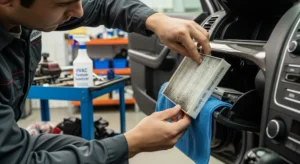
Clean air inside the vehicle is not only about comfort. Poor air quality can cause fatigue, headaches, and reduced concentration — factors that impact driver safety. During long drives, exposure to pollutants may increase drowsiness, while lingering odors can distract drivers. By keeping your cabin filter and HVAC system in good condition, you’re contributing directly to a safer driving environment.
Choosing the Right Cabin Air Filter
When replacing your filter, you have several options:
- Standard Particulate Filters: Capture dust, pollen, and basic debris.
- Activated Carbon Filters: Reduce odors and absorb harmful gases.
- HEPA Filters: Offer the highest level of filtration, blocking ultra-fine particles and allergens.
Depending on your driving environment and health needs, upgrading to a higher-grade filter can significantly improve in-cabin air quality.
Industry Standards & Recommendations
Organizations like the U.S. Environmental Protection Agency (EPA) highlight the importance of indoor air quality, and your car cabin is essentially a small, enclosed indoor space. The EPA recommends reducing exposure to pollutants, and keeping cabin air systems clean is one effective way to do this.
Tips for Keeping Your Car’s Air Clean
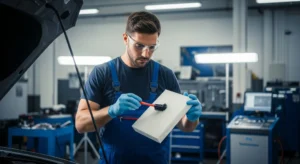
- Replace your cabin air filter regularly
- Schedule HVAC sanitization every 12–24 months or as needed
- Keep windows closed in heavy traffic to reduce pollutant intake
- Run air conditioning on “recirculate” mode during poor outdoor air quality
- Vacuum and clean your interior to reduce dust sources
Conclusion
Cabin air filters and HVAC sanitization may not be the flashiest car services, but they play a vital role in health, comfort, and safety. By keeping your air clean, you’re protecting yourself and your passengers from pollutants, allergens, and discomfort. If it’s been a while since you’ve replaced your cabin air filter or had your HVAC system sanitized, schedule a service today. Breathe easier and drive with confidence knowing your vehicle’s air is as clean as the road ahead.

